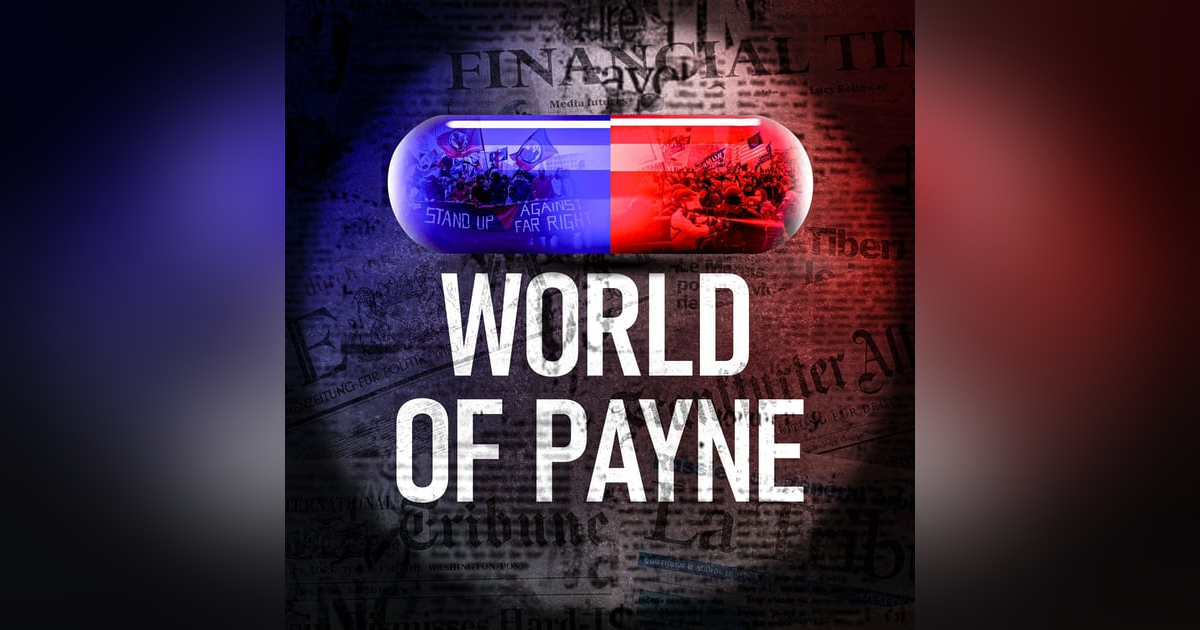Understanding the Government Shutdown: A Deep Dive
The United States government experienced another shutdown on [Date], leaving many Americans frustrated and confused. Government shutdowns have become a recurring issue in recent years, raising questions about the stability of our political system and its impact on the lives of everyday citizens. In this blog post, we will delve into the intricacies of the recent shutdown, examining the factors that led to it, the potential consequences, and the different perspectives on the shutdown's impact. We'll break down the political gridlock and its effects on everyday Americans.
This topic was also covered in depth on our recent podcast episode, Two Sides Today Ep: 1 Government Shutdown, Drug Boat Destruction, National Guardians. In that episode, we examined the government shutdown from both a conservative and a liberal perspective. Be sure to check it out for a balanced and fact-driven analysis of this important issue.
The Government Shutdown of October 2025
A government shutdown occurs when Congress fails to pass appropriations bills or a continuing resolution to fund government operations. Without funding, many government agencies are forced to cease non-essential operations, furloughing employees and suspending services. The shutdown that began on [Date] was the result of disagreements between the political parties on key spending priorities.
Shutdowns can affect a wide range of government functions, from national parks and museums to federal agencies and regulatory bodies. The length and severity of a shutdown can vary depending on the nature of the disagreements and the willingness of the parties to compromise. In the case of the [Date] shutdown, the immediate cause was the failure of Congress to pass a budget. This failure was due to several key factors, which we'll discuss in the next section.
What Led to the Shutdown? Unpacking the Key Factors
Several factors contributed to the government shutdown of [Date]. Understanding these factors is crucial to grasping the underlying issues and the challenges of reaching a resolution. Here are some of the key drivers:
Budgetary Disagreements
The primary cause of most government shutdowns is disagreement over the federal budget. These disagreements often involve debates about the appropriate levels of spending for various government programs, such as defense, education, healthcare, and infrastructure. In the lead-up to the [Date] shutdown, there were significant differences between the political parties on spending priorities. One party favored increased spending on social programs, while the other emphasized the need for fiscal restraint and tax cuts.
Policy Riders
Policy riders are provisions attached to appropriations bills that address specific policy issues. These riders can be controversial and can complicate the budget process, especially when they are unrelated to the funding of government operations. In the [Date] shutdown, policy riders related to environmental regulations and immigration policy were major sticking points. One party sought to include riders that would weaken environmental protections, while the other opposed these efforts.
Political Posturing
Political posturing and brinkmanship often play a role in government shutdowns. Politicians may use the threat of a shutdown to gain leverage in negotiations or to score political points with their constituents. This can lead to a situation where compromise becomes difficult, and the government is forced to shut down. In the lead-up to the [Date] shutdown, both parties engaged in political posturing, making it harder to find common ground.
Lack of Bipartisan Cooperation
A lack of bipartisan cooperation can also contribute to government shutdowns. When the political parties are deeply divided and unwilling to work together, it becomes difficult to reach agreement on budget and policy issues. The [Date] shutdown was exacerbated by the high degree of polarization in American politics and the lack of trust between the parties.
The Political Gridlock: Conservative vs. Liberal Perspectives
The political gridlock that led to the government shutdown reflects the deep divisions in American society. Understanding the different perspectives of conservatives and liberals on key issues is essential to comprehending the shutdown's origins. Here's a look at some of the key differences:
Conservative Perspective
Conservatives generally favor limited government, lower taxes, and reduced regulation. They tend to prioritize fiscal responsibility and believe that government spending should be restrained. In the context of the shutdown, conservatives often argued for cuts in government spending, particularly on social programs and environmental initiatives. They may also support policy riders that would weaken environmental regulations or restrict immigration.
From a conservative viewpoint, government shutdowns are sometimes seen as a necessary tool to force fiscal discipline and prevent wasteful spending. They may argue that the short-term pain of a shutdown is worth the long-term benefits of a smaller, more efficient government.
Liberal Perspective
Liberals generally favor a larger role for government in addressing social and economic problems. They tend to support higher taxes on the wealthy and increased spending on programs such as education, healthcare, and infrastructure. In the context of the shutdown, liberals often argued for maintaining or increasing funding for these programs. They may also oppose policy riders that would weaken environmental protections or restrict access to healthcare.
From a liberal viewpoint, government shutdowns are seen as harmful and unnecessary. They argue that shutdowns disrupt essential government services and harm the economy. They may also criticize conservatives for using the threat of a shutdown to advance their political agenda.
Finding Common Ground
Despite these differences, there may be areas where conservatives and liberals can find common ground. For example, both parties may agree on the need to invest in infrastructure or to improve the quality of education. By focusing on these areas of agreement, it may be possible to break the political gridlock and prevent future government shutdowns. However, this requires a willingness to compromise and a commitment to working together in a bipartisan manner.
Consequences of the Shutdown: Effects on Everyday Americans
The government shutdown had a wide range of consequences for everyday Americans. These consequences affected various aspects of life, from access to government services to the economy as a whole. Here are some of the key effects:
Disruption of Government Services
One of the most immediate effects of the shutdown was the disruption of government services. Many federal agencies were forced to cease non-essential operations, leading to the closure of national parks, museums, and other public facilities. This had a significant impact on tourism and recreation, as well as on the communities that rely on these industries. In addition, many government employees were furloughed, meaning they were temporarily laid off without pay.
Economic Impact
Government shutdowns can also have a significant economic impact. The closure of government agencies and the furlough of employees can lead to a decrease in economic activity. In addition, the uncertainty created by a shutdown can discourage investment and consumer spending. The [Date] shutdown had a negative impact on the economy, although the exact magnitude of the effect is difficult to quantify. Estimates ranged from a few billion dollars to tens of billions of dollars in lost economic output.
Impact on Federal Employees
Federal employees are directly affected by government shutdowns. Furloughed employees are forced to go without pay, which can create financial hardship for them and their families. Even those employees who are deemed essential and required to work during the shutdown may face uncertainty and stress. The [Date] shutdown affected hundreds of thousands of federal employees, many of whom struggled to make ends meet during the shutdown.
Delay in Government Payments
Government shutdowns can also lead to delays in government payments, such as Social Security benefits, veterans' benefits, and tax refunds. These delays can create additional financial hardship for those who rely on these payments. While essential payments typically continue during a shutdown, processing can be slowed down, leading to delays.
The Shutdown's Impact: A Balanced View
Assessing the true impact of a government shutdown requires a balanced view that considers both the short-term and long-term effects. While shutdowns can have negative consequences, they can also serve as a catalyst for political change and fiscal responsibility. Here's a look at some of the different perspectives:
Short-Term Costs
The short-term costs of a government shutdown are clear. Disrupted government services, economic losses, and hardship for federal employees are all significant consequences. These costs can be particularly acute for those who rely on government services or who are employed by the federal government. In addition, the uncertainty created by a shutdown can undermine public confidence in government.
Long-Term Benefits
However, some argue that government shutdowns can also have long-term benefits. By forcing a debate about spending priorities and fiscal responsibility, shutdowns can lead to a more efficient and accountable government. In addition, shutdowns can serve as a check on government overreach and can prevent wasteful spending. However, these potential benefits are often overshadowed by the immediate costs and disruptions caused by a shutdown.
Political Lessons
Government shutdowns can also provide valuable political lessons. They can highlight the importance of compromise and bipartisanship, and they can demonstrate the need for more effective budget processes. By learning from past shutdowns, policymakers can take steps to prevent future shutdowns and to ensure the smooth functioning of government.
Conclusion: Finding Common Ground in Divided Times
The government shutdown of [Date] serves as a stark reminder of the deep divisions in American politics and the challenges of reaching consensus on budget and policy issues. While shutdowns can have negative consequences for everyday Americans, they can also provide an opportunity for reflection and reform. By understanding the factors that led to the shutdown, the different perspectives on its impact, and the potential lessons to be learned, we can work towards a more stable and effective government.
In our podcast episode, Two Sides Today Ep: 1 Government Shutdown, Drug Boat Destruction, National Guardians, we explored these issues in greater detail, offering a balanced and fact-driven analysis of the government shutdown. We encourage you to listen to the episode to gain a deeper understanding of this important topic. Remember, finding common ground in divided times is essential to building a stronger and more united America.

